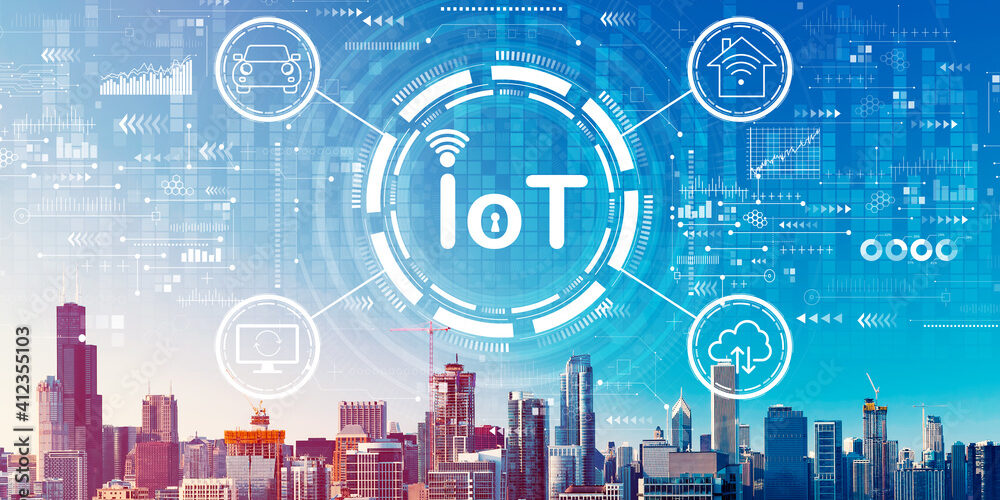The rapid evolution of the Internet of Things (IoT) has transformed industries and daily life by connecting devices in unprecedented ways. The backbone of this transformation is the IoT operating systems, which manage and enable the functionality of these interconnected devices. In this article, we provide a comprehensive IoT operating systems overview, highlighting their importance, functionality, and the latest developments.
For those involved in the export and import sectors, understanding the intricacies of IoT and its operating systems is crucial. The integration of IoT in logistics and supply chain management has revolutionized efficiency and transparency, making it essential for businesses to stay informed about these technological advancements.

What Are IoT Operating Systems?
The core of any IoT device is its operating system (OS). An IoT operating system is specifically designed to manage the hardware and software resources of IoT devices. Unlike traditional OS, these are lightweight, efficient, and capable of handling numerous tasks simultaneously, even with limited computing power.
Key Features of IoT Operating Systems
- Real-time Processing: Many IoT applications require immediate processing of data, which is facilitated by real-time operating systems (RTOS).
- Low Power Consumption: IoT devices often operate on minimal power; hence, their OS must optimize energy usage.
- Connectivity: Seamless communication between devices is crucial for IoT ecosystems, which is managed by the OS.
- Security: With massive data exchange, ensuring data integrity and device security is a fundamental role of IoT OS.
Popular IoT Operating Systems
Several operating systems have been developed specifically for IoT devices, each with unique capabilities:
Contiki
Contiki is an open-source OS known for its low power consumption, making it ideal for battery-operated IoT devices.
FreeRTOS
FreeRTOS is widely adopted due to its simplicity and efficiency, supporting a multitude of IoT applications.
RIOT OS
Designed for microcontroller-based IoT devices, RIOT OS supports a wide range of low-power devices and protocols.
Google’s Fuchsia
As an emerging OS, Fuchsia is designed for a broad range of devices, focusing on enhancing user experience and security.
How IoT Operating Systems Enhance Business Operations
Incorporating IoT into business operations can lead to significant improvements in efficiency and cost savings. Businesses, especially those involved in logistics, import, and export, can greatly benefit from the IoT operating systems.
A key benefit is the real-time data monitoring capability, which allows businesses to track shipments and inventory accurately. This transparency aids in reducing losses and improving customer satisfaction. For more on how IoT can transform logistics, check out this article on remote monitoring using IoT.
Cost Reduction
IoT systems can identify inefficiencies and propose solutions, leading to reduced operational costs. The integration of AI with IoT, as discussed in AI integration in IoT, can further enhance these capabilities.
Improved Security
With the increase in connected devices, security becomes a priority. IoT operating systems provide robust security protocols to protect sensitive data, ensuring that business operations are not compromised.
Challenges Faced by IoT Operating Systems
Despite the numerous advantages, IoT operating systems face several challenges:
Interoperability
Ensuring that different devices and systems can work together seamlessly is a major challenge. The diversity of hardware and software requires standardization efforts.
Security Threats
IoT devices are often targeted by cyber-attacks due to their connectivity. Ensuring robust security measures is an ongoing challenge.
Scalability
As the number of IoT devices grows, the systems must scale efficiently to handle increased data traffic and processing needs.
Future of IoT Operating Systems
The future of IoT operating systems is promising, with continuous advancements aimed at overcoming current limitations. The integration of AI and machine learning is expected to enhance the capabilities of IoT OS, making them smarter and more efficient. For insights into future trends, explore this external resource.
Standardization Efforts
Efforts are underway to standardize IoT protocols and systems, which will enhance interoperability and security across devices.
Increased Adoption
As IoT technology becomes more accessible, its adoption is expected to increase across various sectors, driving further innovation.
Conclusion
The IoT operating systems play a crucial role in the functionality and efficiency of IoT devices. Understanding their capabilities and challenges is essential for businesses and individuals looking to leverage IoT technology. As advancements continue, the impact of IoT on industries, especially logistics and supply chain, will become even more significant.

FAQs
What is an IoT operating system?
An IoT operating system is software designed to manage and control IoT devices, ensuring efficient operation and connectivity.
How do IoT operating systems differ from traditional ones?
IoT operating systems are lightweight and optimized for low power consumption and real-time processing, unlike traditional operating systems.
Why is security important in IoT operating systems?
Security is crucial to protect the vast amounts of data exchanged between IoT devices and prevent unauthorized access.


